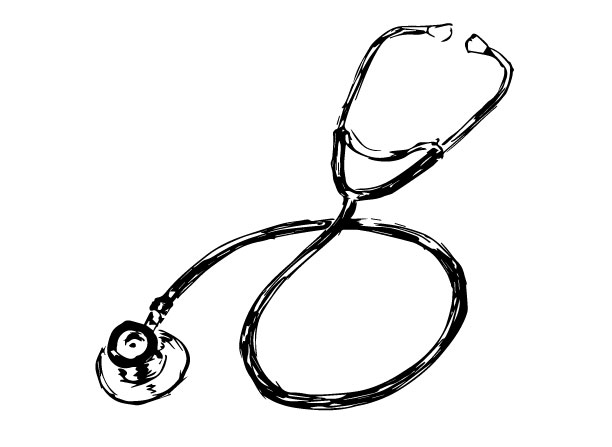A CONVERSATION ABOUT EQUALITY VERSUS EQUITY
Earlier this semester, the Class of 2018 sat down to their first ethics lecture of the year as Dr. David Beyda introduced the complex ethics of social justice and the distribution of resources. Among the Poll Everywhere surveys and the intractable moral dilemmas, one of the concepts broached was the idea of equity. Though Dr. Beyda addressed equity in terms of actions and ableness, the broader category is germane to so much of our world today and is interwoven into issues of race, gender, and privilege. Medical ethics is equally touched by these ideas, and how we approach equity as healthcare providers is foundational to how we view the role of medicine. The conversation below is an attempt to tease out what equity is and why it pertains to us as future doctors.
Jonathan Cagle: Alex, first off, I’m excited to broach this topic with you because, as an MPH, you’re not just reflecting on the ethics of equity, but you bring an added point of view from the perspective of public health. I have to admit though that I needed to do some homework before writing about this with you. Thanks to you, I only recently learned that the words equality and equity have two very distinct meanings. I don’t really think most people appreciate this difference though, which is surprising since the gist of this argument is one that so many people encounter and opine about. The topic of equity reaches across so many concepts from affirmative action to liver transplants, so it definitely merits exploration. Can you help articulate what equality and equity are and explain the role of equity in healthcare?
Alex Geiger: I would be happy to, Jonathan! As you mentioned, the words equity and equality are often used interchangeably, but they are actually not synonymous. Equality can be simplified as providing everyone with the same thing, whether that “thing” is the ability to purchase insurance, get married, go to school, or access healthcare services. Equity, however, recognizes that, while an opportunity or service is technically available to someone, they may be unable to participate or utilize that service due to obstacles or barriers. These could be anything from the lack of income, knowledge, institutionalized discrimination, or some other unfair barrier. As an example, let’s consider components of the Affordable Care Act (ACA). As you know, the ACA created a health insurance marketplace, which provides individuals with the ability to purchase insurance without any exclusions or unfair premium increases based on their gender or pre-existing conditions. This is an example of equality—everyone is provided with the same opportunity (to purchase insurance), regardless of their identities. However, this, in and of itself, does not necessarily ensure equitable access to insurance. Recognizing that those of low socioeconomic status may be unable to pay for insurance premiums, making insurance realistically out of reach, despite it being technically available to them, and then providing subsidies to those of lower socioeconomic status to “level the playing field” is moving towards equity.
Cagle:Those are great points, but some questions linger. Firstly, this argument certainly touches healthcare, but it’s founded in a deeper conversation about wealth and social inequality that the medical world doesn’t direct. We are a capitalist nation, and we embrace the balance of sacrificing our benefits now (including our health) for the possibility of acquiring wealth and privilege later. Are any measures we take as physicians inconsequential since we don’t expect social inequity to disappear any time soon? Is it our fight as doctors, and is it even worth it?
Geiger: As many of us students have quickly learned, there are a lot of factors outside of the clinic that impact the health and experience of our patients. Many of these factors are outside of our control. While it can seem daunting (and very frustrating), we must remember that our duty is to provide the best care possible to our patient—even if that means fighting the same uphill battle over and over again. This principle of duty to each individual patient, regardless of the current social, political, financial, or situational circumstances, is a recurring theme in nearly every medical society’s code of ethics [1-2]. In fact, many go even further, stating that physicians not only have a duty to provide care to the patient but also to actively work to change factors outside of the clinic that impact the well-being of our patients.
Cagle: Also, let’s not ignore the limitations of resources. There’s certainly a question of whether or not we have the resources to ensure equitable outcomes. Our current system prioritizes severity of illness and urgency. If we had fewer resources, would we need to alter this paradigm? Let’s look at a thought experiment to explore this. Let’s say that we have two patients, Sally and Sandy. Sally has fewer means and has experienced poor experiences in the healthcare system because of class and racial disparities. She also has a high deductible she can’t afford. Sandy has greater means, has always had great medical care, and doesn’t even know how much her deductible is since she can easily afford it. Now imagine that both women experience chest pain at the same time. Sally decides to wait it out since she is worried about cost (inequity). Sandy goes straight to the doctor for evaluation. Just before Sandy is wheeled off to the cath lab, Sally finally presents to the ED. Let’s say the hospital can only treat one woman at a time, and let’s imagine that the EKGs show the same ST elevations and similar CK and Troponin levels. If we value equity, wouldn’t this mean that Sandy should get bumped and priority given to Sally?
Geiger: Not necessarily. If you denied Sandy the opportunity to access the cath lab, she may experience worse outcomes than Sally, which is not the goal either. The goal is to achieve the same outcome for both of them, regardless of their backgrounds. Achieving equitable outcomes implies looking at the finish line, instead of the starting line (like equality does). This means that you look for a way to get Sally and Sandy to the same health outcome despite their differences in socioeconomic status and past experiences in healthcare. We tend to focus on sensationalized examples, where life-threatening conditions arise and there are only enough resources to save one person. It’s more exhilarating and audience-capturing than taking a step back, looking at the bigger picture, and asking ourselves if allocating resources towards primary and secondary prevention would have averted the need for expensive and invasive procedures altogether.
Furthermore, regarding your question about whether or not we can afford to address inequities in health outcomes, there is little doubt that inequities actually contribute to both direct and indirect healthcare costs. It is estimated that eliminating health disparities, in just three years alone, would have saved 230 billion dollars in direct medical expenditures and another 1 trillion dollars in indirect medical expenditures [3-4]. Thus, the limited availability of resources (whether those are funds, goods, or manpower) actually speaks to the urgency we should place on reducing inequity in healthcare.
Conclusion:
While the terms equity and equality are often used interchangeably, the two terms have distinct meanings. While efforts to address inequity and inequality both seek to improve the outcomes of those who are underserved in our communities, there are important ethical considerations to building these programs, such as ensuring autonomy and ethical resource allocation. Furthermore, while tackling an issue as pervasive and convoluted as inequity can seem daunting, it is important to remember that there are a myriad of ways in which each of us can make an impact on a daily basis that do not involve sweeping changes to our healthcare system. See the list below for ideas. You can make a difference!
Everyday Ways to Make a Difference:
- Volunteer in your community. Many programs provide services that address barriers to equity that underserved populations in our community face. Check out the wealth of CHIP programs right here at UA COM-P!
- When seeing patients, don’t assume your patients have the means to follow through with your treatment plan. Some patients may not be able to afford medications, diagnostic tests, or other treatments but may not mention this if you do not ask. Ask yourself if there a more cost-effective way to get the same outcome for your patient. Additionally, ask yourself if the test is even necessary—will the outcome guide your treatment, or is it just information for information’s sake?
- Educate yourself on community resources and programs that can address barriers your patients have. Are there services for patients who have barriers to accessing health services, healthful foods, education, jobs, or even transportation to appointments? Go the extra mile with your patients—ask about barriers they face, and try to find a resource to help them overcome those barriers.
- Educate yourself on social determinants of health. Don’t label patients as “difficult” or “noncompliant” just because they have not done exactly as you asked. Understanding where our patients are coming from can help you to meet on common ground and find way to work as a team and make a difference in their health.
- Bring attention to an issue or unmet need in your community. Even if you are not interested in becoming a politician yourself, you can still shine light on issues that are not being addressed. Bring it up to your colleagues, local politicians, or other advisory committees, and ask if there is anything you can do to make a difference.
1. Ethics Statement. Council of Medical Specialty Societies. http://cmss.org/policies-positions/ethics-statement/ Accessed October 28, 2015.
2. Principles of Medical Ethics. American Medical Association. http://www.ama-assn.org/ama/pub/physician-resources/medical-ethics/code-medical-ethics/principles-medical-ethics.page Accessed October 28, 2015.
3. Laveist T, Gaskin D, Richard P. Estimating the economic burden of racial health inequalities in the United States. International Journal of Health Services. 2011;41:231-238.
4. Joint Center for Political and Economic Studies. The economic burden of health inequalities in the United States. 2009. Washington, DC.
*Foundational ethical concepts were researched in Principles of Health Care Ethics, Second Edition Edited by R.E. Ashcroft, A. Dawson, H. Draper and J.R. McMillan © 2007 John Wiley & Sons, Ltd
 Alex Geiger is a medical student at The University of Arizona College of Medicine – Phoenix. He completed his Master of Public Health (MPH) at Arizona State University and his BS in biological sciences at the University of Connecticut. He is passionate about public health, policy, and health economics with a particular interest in how these issues impact underserved communities. Feel free to contact Alex at amgannon[at]email.arizona.edu
Alex Geiger is a medical student at The University of Arizona College of Medicine – Phoenix. He completed his Master of Public Health (MPH) at Arizona State University and his BS in biological sciences at the University of Connecticut. He is passionate about public health, policy, and health economics with a particular interest in how these issues impact underserved communities. Feel free to contact Alex at amgannon[at]email.arizona.edu Jonathan Cagle has a BA in Spanish from Southern Illinois University. Before studying medicine, he worked in politics and the non-profit sector. He is one of the student co-leaders of the Medical Ethics Interest Group.
Jonathan Cagle has a BA in Spanish from Southern Illinois University. Before studying medicine, he worked in politics and the non-profit sector. He is one of the student co-leaders of the Medical Ethics Interest Group.The Differential is a platform for UA COM-P medical students that aims to educate, inform and enlighten our community through collaborative dialogue and communication.

